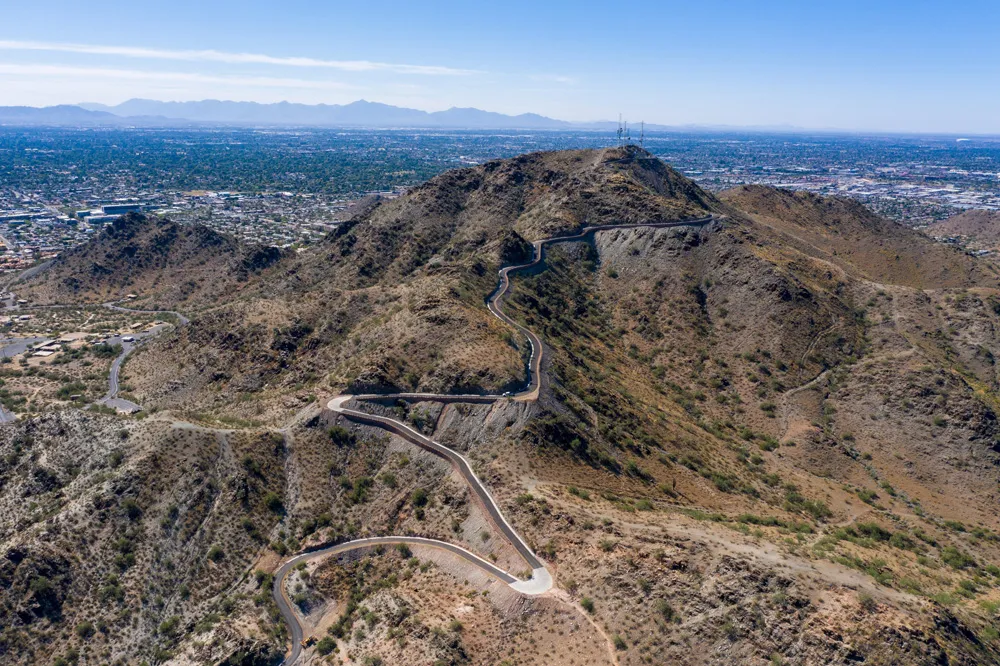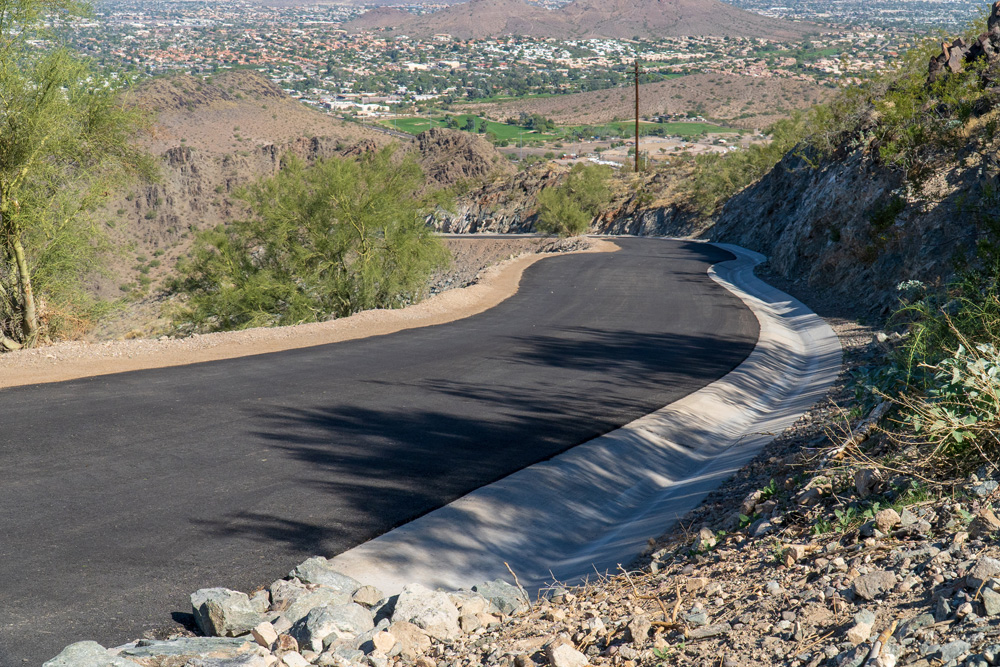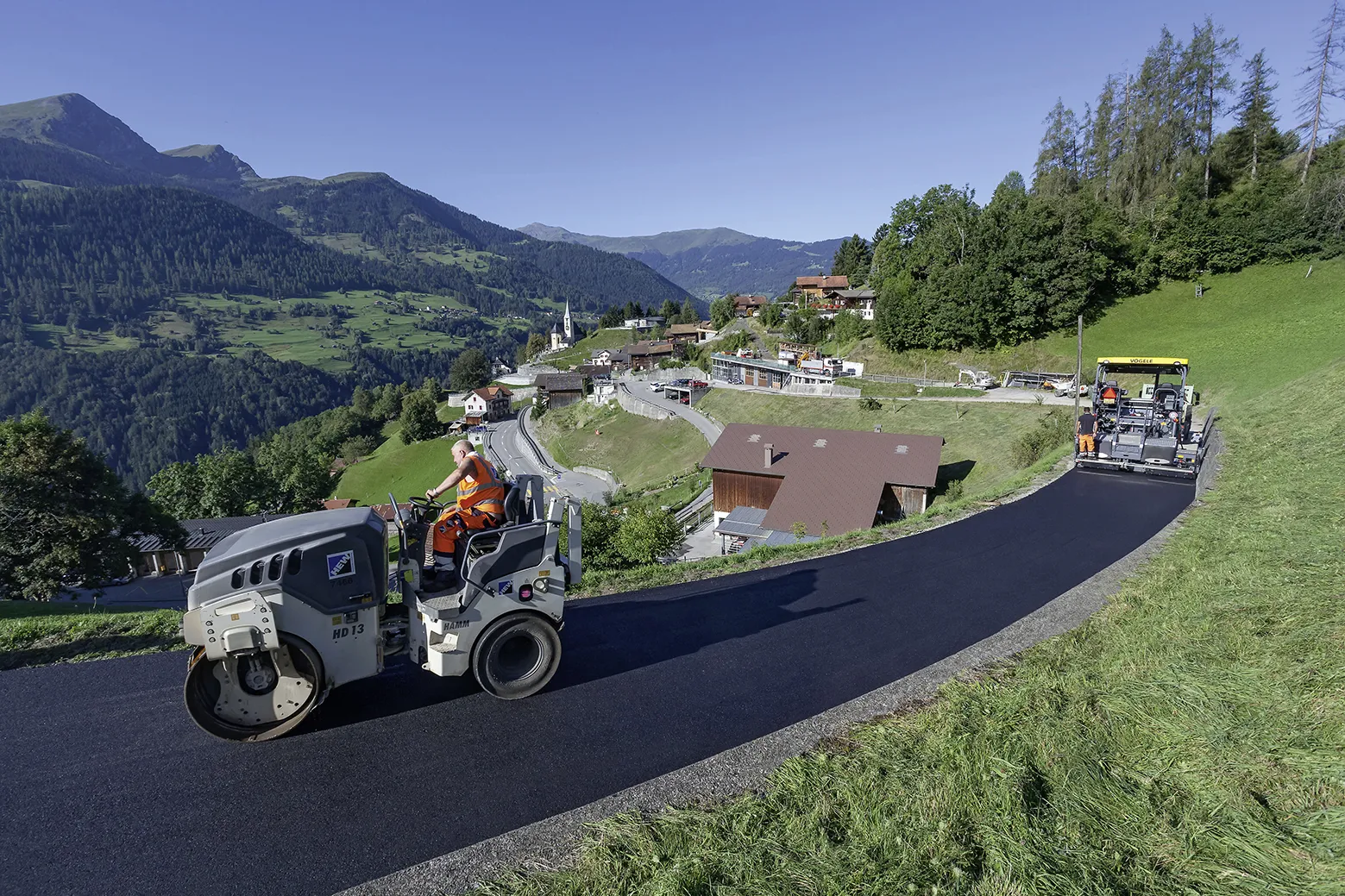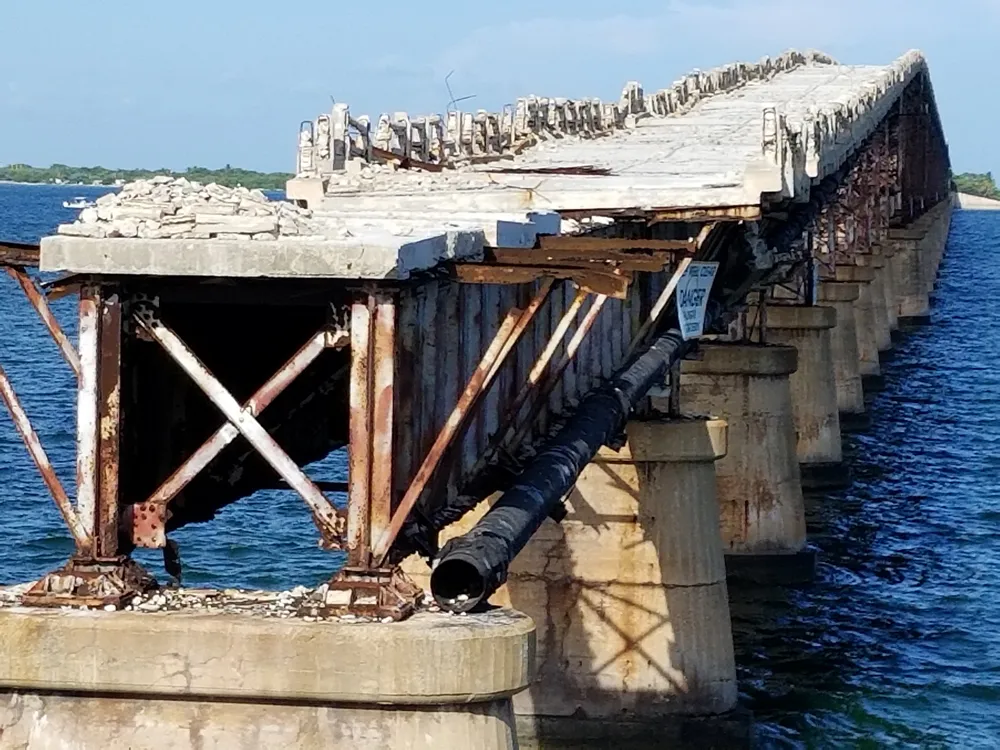
The mountain is also home to a number of transmission towers which have served as central hubs for the city’s wireless and VHF networks since 1965. But when the existing towers could not safely support new equipment while also complying with loading standards, the city made plans to construct a new 36.6m-high tower at the mountain’s summit.
However, the access road leading to the construction site was in a poor state of repair due to its many blind spots and steep grades. This meant that getting the materials and equipment required for the construction of the new transmission tower would be impossible. The existing road was also too narrow to cope with the 91tonne crane needed to erect the tower.
The city tasked Hunter Contracting, a heavy civil construction company based in Gilbert, AZ, with improving the 1.34km stretch of winding road to make it safe to use and also to provide enough space for the crane.
The 23% grades, blind curves and steep drop-offs presented challenges that impacted nearly every aspect of its reconstruction and extension. Sean Osborne, a project engineer at Hunter Contracting, explained that the single-lane access road required precise coordination across sub-contractors and project teams. “The narrow road limited locations for material storage and could only accommodate traffic in one direction, so we had to coordinate movement of equipment and crews going up or down the mountain in advance to ensure safety and passage without interrupting work in progress.”
A speed limit of 8km/h was established and a spotter was put in place for all concrete and haul trucks. Additionally, crews were required to make eye contact with an equipment operator before passing, and a controlled-access zone was maintained 1m from the edge of the mountainside. During construction, the project team faced the risk of falling boulders, some as large as automobiles. “Our crews monitored the terrain and, in one instance, discovered a boulder that had delaminated close to the mountainside, meaning that it could fall at any time,” Osborne said. “Fortunately, we cleared the area and dislodged the boulder without incident.”
With the road finally wide enough to safely accommodate the crane, the team pioneered a road for the last 61m of unpaved access road and provided a staging area for the crane while the pad was under construction. Once work concluded, crews moved the crane into position on the pad. A forklift delivered tower pieces to the crane, and it was erected successfully, meeting the loading requirements needed to house new, heavier equipment. The improved access road is now also safer for repair personnel and hikers who frequently hike the mountain.

Completing a project of this size and complexity requires accurate and efficient collection of data in real time, which is one reason construction companies like Hunter Contracting moved to a fully connected, cloud-based construction management suite, such as ViewpointOne.
By digitising daily logs, site inspections, materials delivery and other daily site information, ViewpointOne’s Spectrum ERP solution enabled Hunter Contracting’s office and field crews to communicate and collaborate with real-time data. This reduced unnecessary costs and gave project managers insight into potential problems that could have lead to costly delays.
“Comparing planned versus actual production in Spectrum revealed that continuing at the current production pace would cause us to lose nearly US$50,000 with the drainage channel,” said Osborne. “With this insight, we were able to determine that the concrete trucks were taking too long to get to the site because they were taking turns driving up and down the mountain. To solve the problem, we created staging areas that allowed trucks to pull over when needed and, as a result, increased from one to four trucks on the mountain at the same time.”









